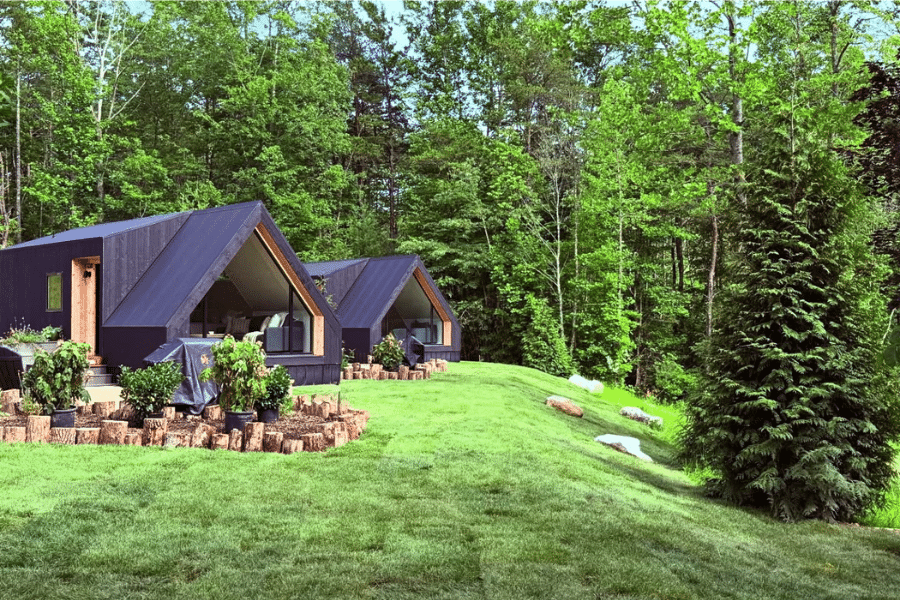
If you’re considering adding an accessory dwelling unit (ADU) to your property, Rhode Island is among the most ADU-friendly states. Thanks to statewide legislation passed in 2024, ADUs are now allowed throughout the state.
However, navigating specific local requirements can be challenging. That’s why we’ve created this comprehensive guide, detailing Rhode Island’s ADU regulations, including sizing, setbacks, and more, to help you easily comply with all applicable codes.
Are ADUs Allowed in Rhode Island?
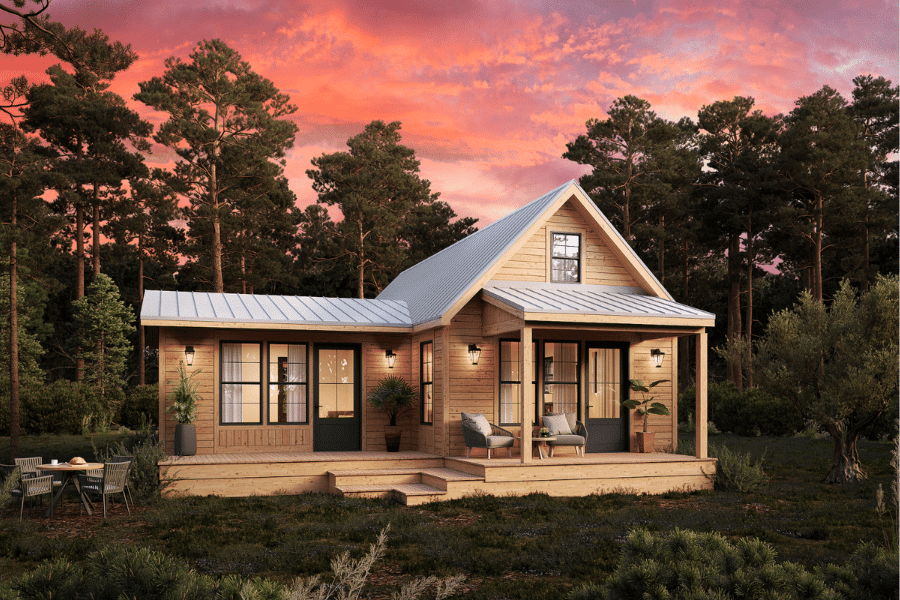
Rhode Island recently passed statewide legislation legalizing accessory dwelling units (ADUs). Under this new law, municipalities must allow ADUs by right, subject to these minimum standards:
- Minimum Lot Size: 20,000 square feet
- Maximum Size for a 1-bedroom ADU: 900 square feet or 60% of the floor area of the principal dwelling unit, whichever is less
- Maximum Size for a 2-bedroom ADU: 1,200 or 60% of the floor area of the principal dwelling, whichever is less
Local governments may still enforce additional requirements, such as height restrictions, setbacks, and other zoning regulations. Continue reading to find out what your specific city or county allows, and whom you should contact to ensure compliance with all applicable rules.
ADUs That Are Allowed in Rhode Island
In Rhode Island, ADUs must be no larger than 900 to 1,200 square feet, depending on the number of bedrooms. All our ADU models comply with these sizing requirements.
Below is each available model and details about the included key features.
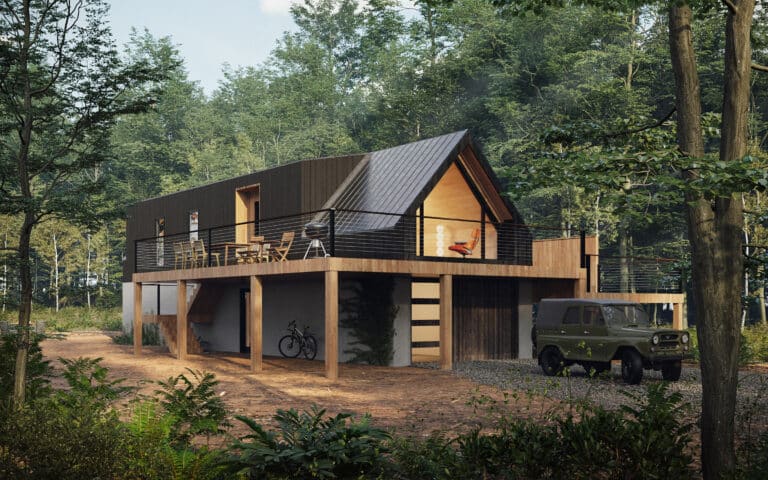
The A-Frame ADU
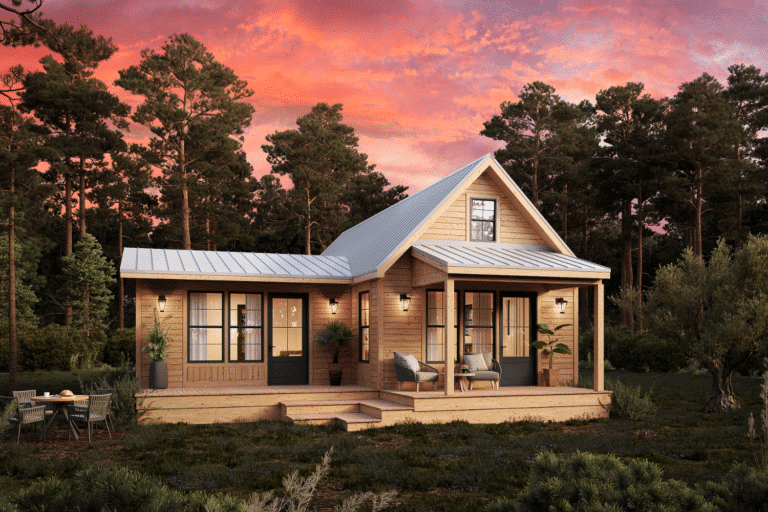
The Grove ADU
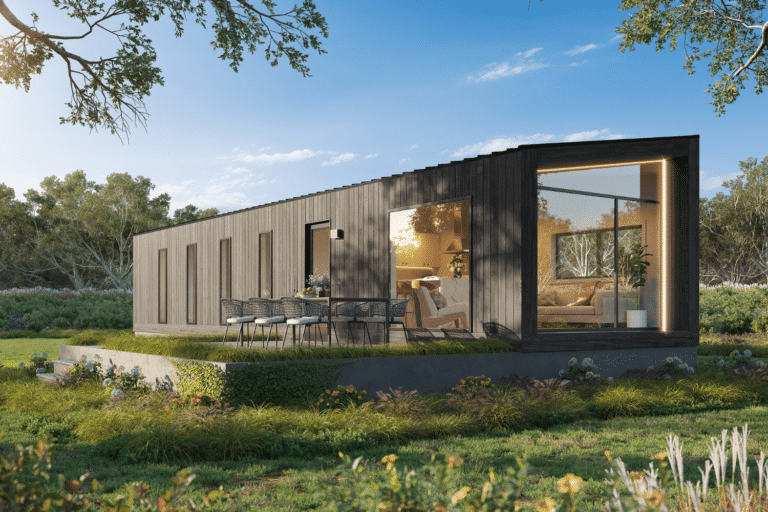
The Luna ADU

The Rivara
What Is Considered An ADU in Rhode Island?
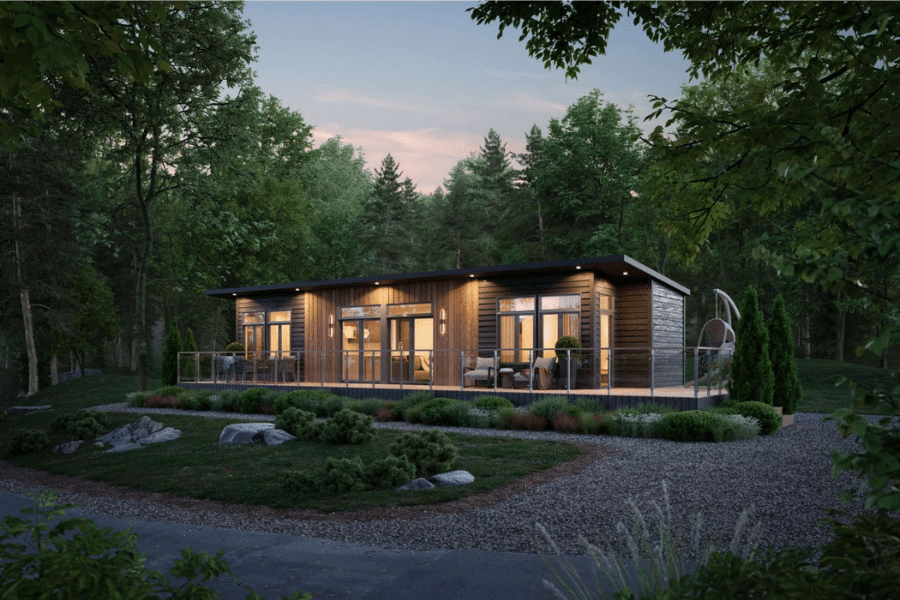
In Rhode Island, an ADU can be attached to the primary dwelling, detached as a standalone structure, or created through converting an existing structure. All ADUs must comply with state sizing requirements and applicable zoning regulations, particularly setback rules. Below, we’ll review several common structures to clarify if they can be used as ADUs.
Can Park Model Tiny Homes Be Used As ADUs?
There are no explicit statewide regulations in Rhode Island prohibiting recreational vehicles or park models (built to ANSI 119.5 standards) from being used as ADUs. However, local requirements for foundations, usage, and sizing can vary widely. Be sure to consult your local authorities to confirm what is permitted in your area.
If you’re considering living in a park model tiny home, start with our guide to tiny home regulations in Rhode Island. Then, see our comprehensive comparison guide to help you understand the difference between tiny homes and ADUs.
Below are several park model options that fall within Rhode Island’s ADU maximum size limits (900 to 1,200 square feet).

The A-Frame

The A-Frame Bunkhouse
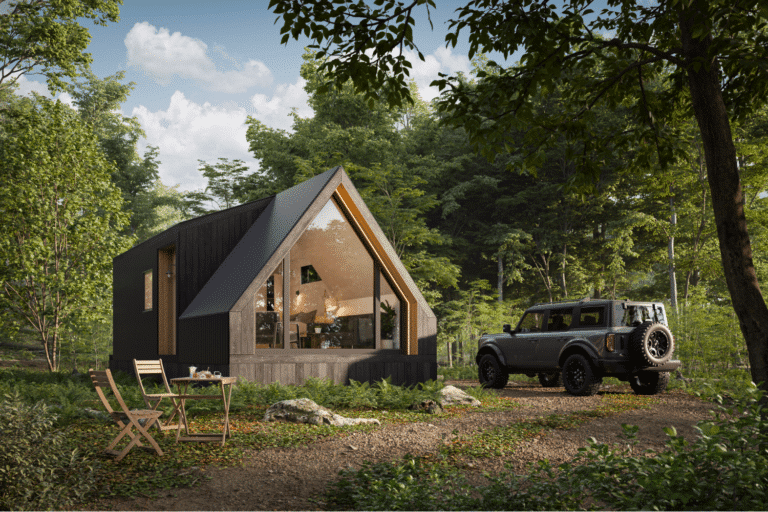
The A-Frame Studio
Can Cabins From Zook Cabins Be Used As An ADU?
Yes, many of our models can be used as ADUs, provided they comply with your local sizing and design requirements. Our eligible models include:
Certain log and modern cabin models exceed Rhode Island’s maximum ADU size limits of 900 to 1,200 square feet and therefore cannot be used as ADUs within the state. However, many of our models, including those listed below, meet these size restrictions. All our luxury mobile homes satisfy the state’s sizing requirements.
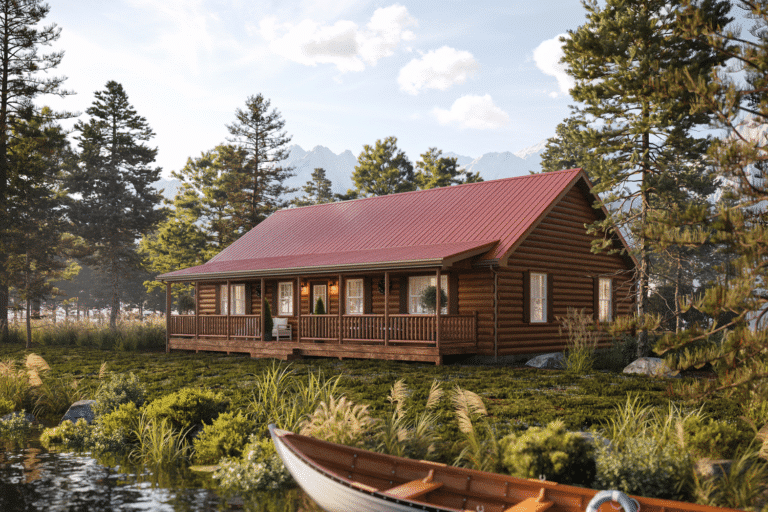
The Musketeer
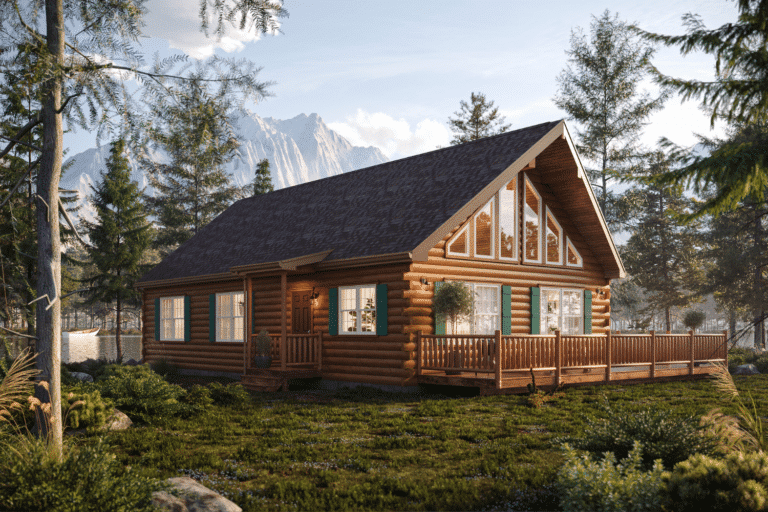
The Chalet
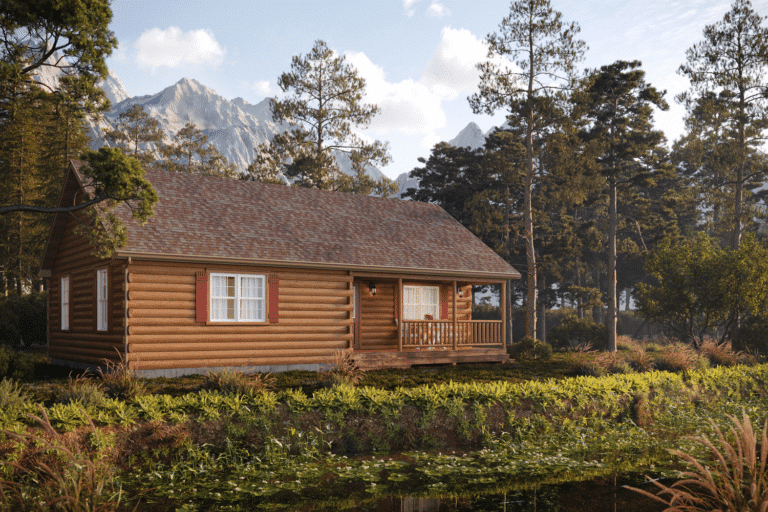
The Frontier
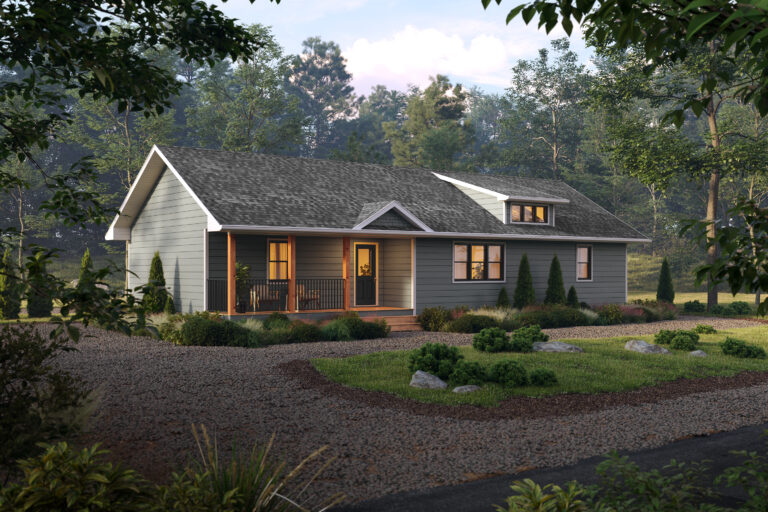
The Woodland
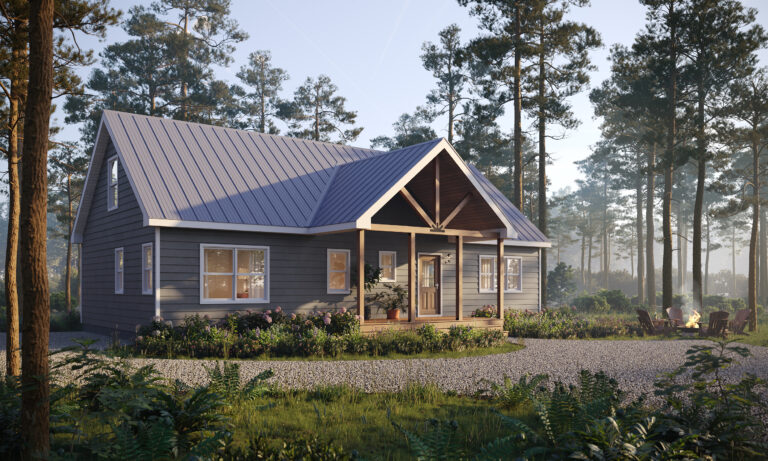
The Franklin

The Pioneer
What is the Difference Between a Prefab ADU & a Modular ADU?
The primary difference between prefab and modular ADUs lies in their construction methods. Prefab ADUs are constructed off-site and delivered ready to use, while modular ADUs are built in separate sections off-site and assembled at the final location.
Explore our comprehensive guide comparing prefab and modular ADUs for further details on these two construction methods.
Size & Placement Requirements
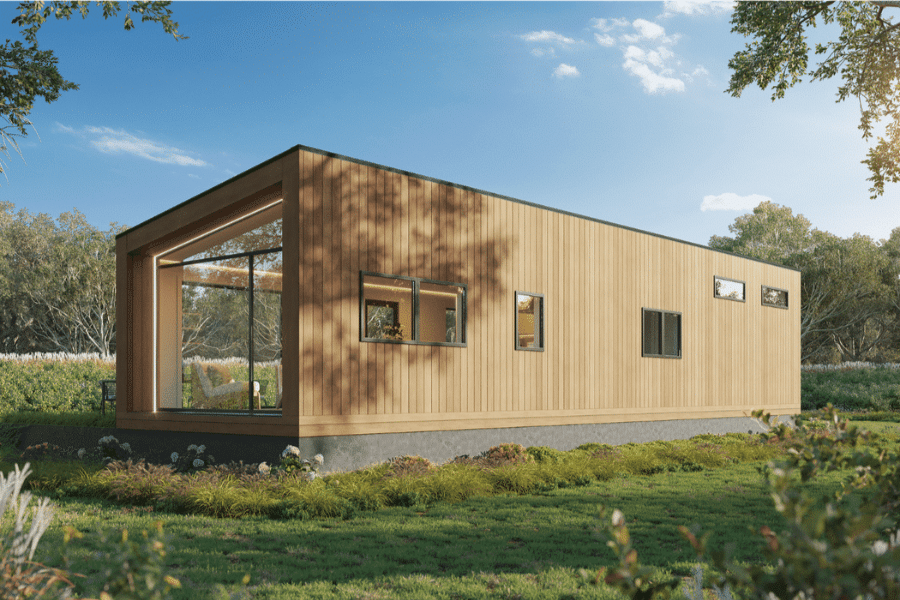
The size and placement of an ADU in relation to a primary dwelling significantly impact property layout and functionality. Because an ADU shares the lot with another structure, it is subject to more stringent sizing, placement, and setback regulations. We’ll examine these requirements in greater detail below.
What is the Minimum Size for an Accessory Dwelling Unit?
The minimum size for an ADU in Rhode Island is determined by local building codes. Generally, dwelling units must be at least 150 to 200 square feet, which varies based on your locality. Always verify minimum size requirements by consulting your local planning or building department.
Can My ADU be Bigger Than My House?
No. Under state requirements, your ADU cannot exceed 60% of the floor area of your primary dwelling unit.
Do You Need A Permit For An ADU in Rhode Island?
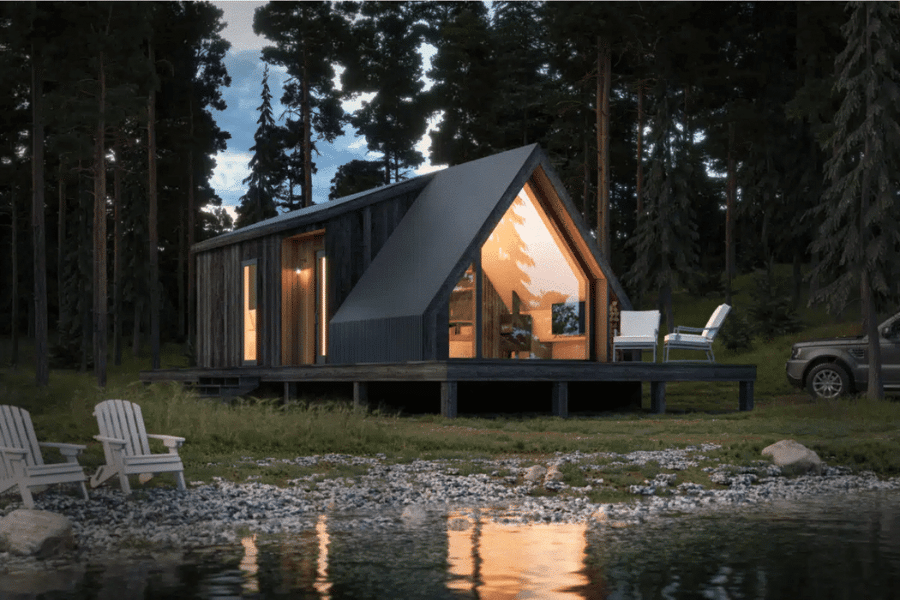
Yes. Under state law, ADUs must be allowed by right, meaning no special use permit or discretionary zoning approval is necessary. However, most local jurisdictions will still require obtaining standard building and zoning permits before constructing a new structure on your property.
Are There Any Incentives or Grants for ADUs in Rhode Island?
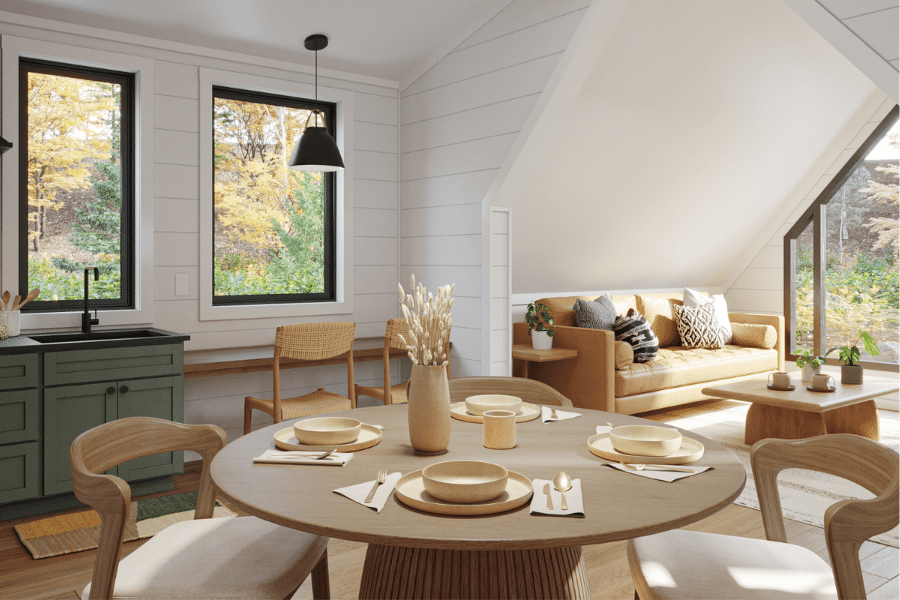
While no statewide grants specifically target ADUs, other financing options may be available. Contact your local authorities or financial institutions to explore what funding is available in your area.
What Features are Included in An ADU from Zook Cabins?
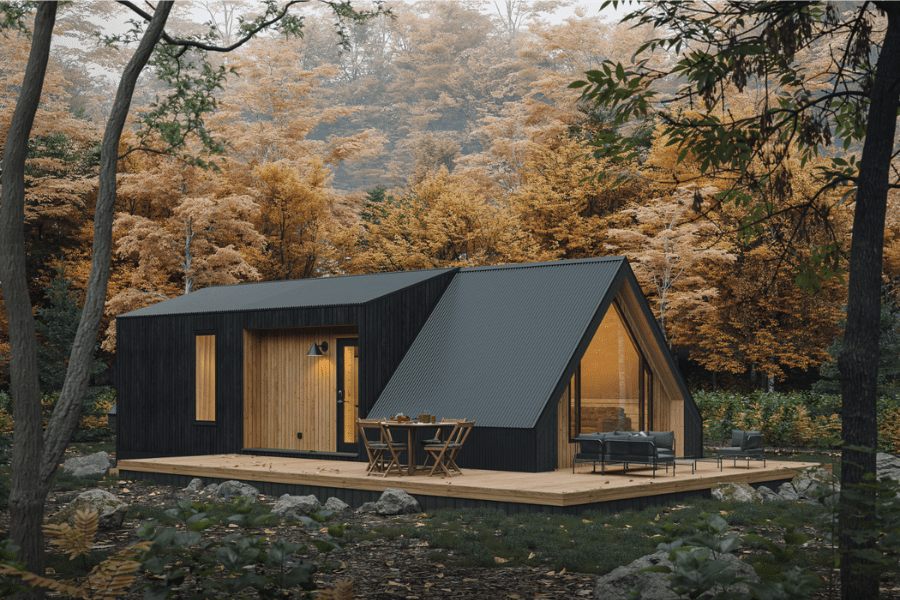
While specific features vary by model, our ADUs offer a range of modern designs with various floor plans, allowing you to select the one that best fits your needs, including:
- Fully finished interiors
- Floor plans featuring multiple bedrooms and bathrooms
- Sizes ranging from 571 to 848 sq. ft.
- Heating & cooling options
- Insulation
- Options for front porches or loft spaces
- Living Areas with plenty of natural light
It’s important to note that certain interior features, such as countertops, tile work, and cabinet colors, can be upgraded to better match your preferences. Talk to your sales representative to learn more about available customization options.
Are Zook Cabin’s ADUs Built to Code?
Yes! Our models are specifically designed to meet local size and room requirements. Because they are modular homes, they must be installed on a permanent foundation to comply with local building codes. Zook Cabins will help you choose the foundation type that best fits your property and meets local requirements.
Can an ADU Have Multiple Bedrooms and Bathrooms?
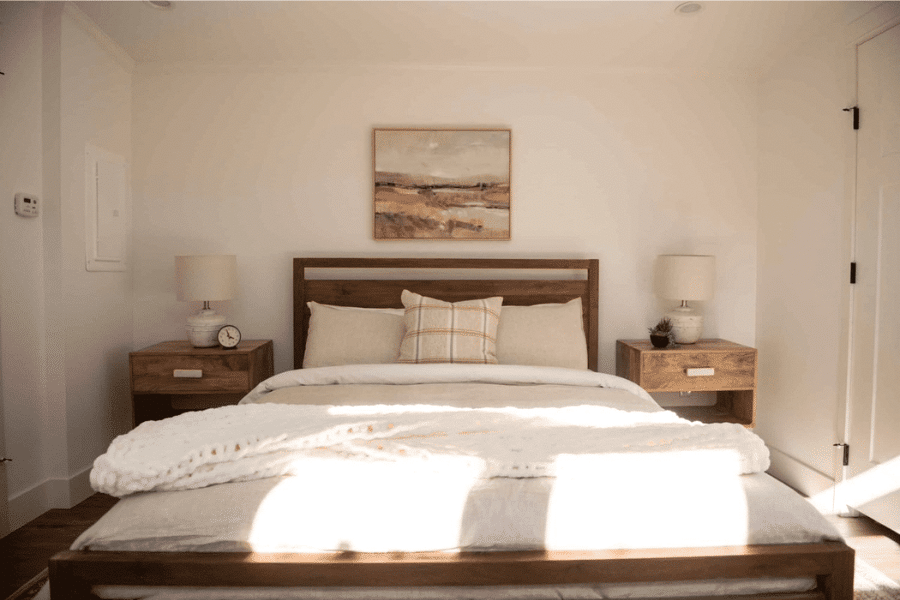
Multiple ADUs may be permitted, though some local areas restrict the number allowed on a property. Additionally, under state standards, ADUs must meet specific size requirements depending on their bedroom count.
Explore our Grove, Luna, and A-frame models if you’re considering an ADU with multiple bedrooms or bathrooms that meet state sizing guidelines. These designs range from 571 to 848 square feet, comfortably within Rhode Island’s 900- to 1,200-square-foot maximum requirements.
Are ADUs A Good Investment?
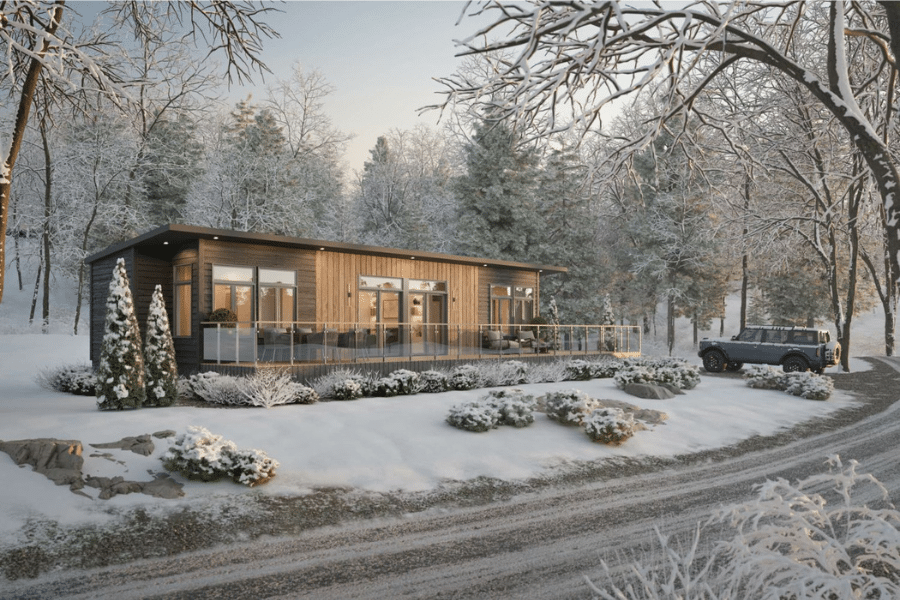
Yes, ADUs can serve as rental properties or even be sold to generate additional income. However, be aware that some local areas impose owner-occupancy and resale restrictions. For instance, you might not be permitted to sell your ADU separately from the primary residence, or to rent out both the primary and accessory units simultaneously, unless you reside in one. Despite these limitations, ADUs can still provide supplemental income and offer affordable housing opportunities to others, making them beneficial on multiple levels.
What Are the Requirements for ADUs in Each County in Rhode Island?
Rhode Island has only five counties; most do not maintain separate regulatory agencies for accessory dwelling units (ADUs). Instead, counties typically adhere to statewide ADU regulations or defer specific enforcement to their municipalities.
Below, you’ll find an overview of ADU requirements by county. You may move directly to municipal requirements if you’re specifically interested in city or town regulations.
| Bristol County | No website |
| Kent County | Kent County |
| Newport County | Newport County |
| Providence County | Zoning |
| Washington County | Washington County |
Does Bristol County Allow ADUs?
Yes, they are likely permitted under state requirements, including:
- Maximum Size for a 1-bedroom ADU: 900 square feet or 60% of the floor area of the principal dwelling unit, whichever is less
- Maximum Size for a 2-bedroom ADU: 1,200 or 60% of the floor area of the principal dwelling, whichever is less
As this is just for the town of Bristol, it’s essential that you contact your local planning or zoning official to determine whether they allow ADUs and what their requirements are before placing one on your property.
Does Kent County Allow ADUs?
Yes, since the state has passed legislation permitting ADUs, you likely can add one to your property in Kent County so long as it doesn’t exceed the following sizing requirements:
- Maximum Size for a 1-bedroom ADU: 900 square feet or 60% of the floor area of the principal dwelling unit, whichever is less
- Maximum Size for a 2-bedroom ADU: 1,200 or 60% of the floor area of the principal dwelling, whichever is less
Does Newport County Allow ADUs?
While Newport County does not have its own regulations regarding ADUs, it does appear to allow them per the state of Rhode Island’s requirements. This includes:
- Maximum Size for a 1-bedroom ADU: 900 square feet or 60% of the floor area of the principal dwelling unit, whichever is less
- Maximum Size for a 2-bedroom ADU: 1,200 or 60% of the floor area of the principal dwelling, whichever is less
Does Providence County Allow ADUs?
Providence County does not have its own website or ADU regulations, but the city of Providence appears to permit them per the state requirements. This includes:
- Maximum Size for a 1-bedroom ADU: 900 square feet or 60% of the floor area of the principal dwelling unit, whichever is less
- Maximum Size for a 2-bedroom ADU: 1,200 or 60% of the floor area of the principal dwelling, whichever is less
Does Washington County Allow ADUs?
While the county doesn’t appear to have any regulations in place, it likely follows state requirements and allows ADUs, so long as they don’t exceed the following requirements:
- Maximum Size for a 1-bedroom ADU: 900 square feet or 60% of the floor area of the principal dwelling unit, whichever is less
- Maximum Size for a 2-bedroom ADU: 1,200 or 60% of the floor area of the principal dwelling, whichever is less
Find Your Accessory Dwelling Units Requirements in Rhode Island By Municipality
Does Providence Allow ADUs?
Yes, Providence allows ADUs so long as they meet the following requirements:
- Maximum Size for a 1-bedroom ADU: 900 square feet
- Maximum Size for a 2-bedroom ADU: 1,200 square feet
- Maximum Number of Bedrooms: 2
Contact the Department of Inspection and Standards to get approval for your ADU plans.
Does East Providence Allow ADUs?
East Providence appears to allow only accessory family dwelling units, meaning that only a relative of the principal dwelling’s owner may live in the unit. The zoning code does not explicitly address traditional ADUs intended for non-family use. However, they may be permitted under the state’s requirements. Contact the Zoning Division to confirm what is permitted on your property.
Does Central Falls Allow ADUs?
It appears as though they do not allow ADUs, although this would seem to contradict the state’s requirements. Contact the Planning & Economic Development Department for clarification on what they allow.
Does Cranston Allow ADUs?
Yes, Cranston permits up to one ADU per lot under the following circumstances:
- Maximum Size of a 1-bedroom ADU: 900 square feet or 60% of the floor area of the primary dwelling, whichever is less
- Maximum Size of a 2-bedroom ADU: 1,200 square feet or 60% of the floor area of the primary dwelling, whichever is less
To ensure compliance and get approval for your ADU, contact the Building Inspection & Zoning Department.
Does Newport Allow ADUs?
Yes, provided that they meet the following requirements:
- Maximum Size of a 1-bedroom ADU: 900 square feet or 60% of the floor area of the primary dwelling, whichever is less
- Maximum Size of a 2-bedroom ADU: 1,200 square feet or 60% of the floor area of the primary dwelling, whichever is less
- Minimum Size: 150 square feet or more, depending on the number of people inside the ADU. Check with the Newport Building Code to certify compliance.
- Setbacks: Based on the ones for accessory structures for your zoning district
Since some requirements can vary based on the specifics of your ADU project, you must consult with the Planning & Development Department to ensure compliance with all applicable regulations.
Does Pawtucket Allow ADUs?
Pawtucket does allow ADUs, provided that:
- Maximum Size of a 1-bedroom ADU: 900 square feet or 60% of the floor area of the primary dwelling, whichever is less
- Maximum Size of a 2-bedroom ADU: 1,200 square feet or 60% of the floor area of the primary dwelling, whichever is less
- Setbacks and Height: Based on the requirements for the principal dwelling unit
Requirements can vary depending on your property’s specific location, so contact the Zoning Department to ensure you comply with all applicable regulations.
Does Warwick Allow ADUs?
Yes, ADUs are permitted, but like most municipalities in Rhode Island, Warwick has specific size restrictions:
- Maximum size for a 1-bedroom ADU: 900 square feet or 60% of the primary dwelling’s floor area, whichever is less.
- Maximum size for a 2-bedroom ADU: 1,200 square feet or 60% of the primary dwelling’s floor area, whichever is less.
Additional requirements must also be satisfied, including obtaining an approved building permit. Contact the Planning Department before submitting your application to ensure your ADU meets all applicable standards.
Does Woonsocket Allow ADUs?
Yes, Woonsocket likely also allows ADUs under the state’s provisions. This means that your ADU cannot exceed the following size:
- Maximum size for a 1-bedroom ADU: 900 square feet or 60% of the primary dwelling’s floor area, whichever is less.
- Maximum size for a 2-bedroom ADU: 1,200 square feet or 60% of the primary dwelling’s floor area, whichever is less.
Searching For An ADU Builder Serving Rhode Island?

If you’re planning an ADU project in Rhode Island, Zook Cabins can help. We offer various state-compliant ADU models in various sizes, styles, and layouts. Our Grove, Luna, and A-frame models include multiple bedroom and bathroom configurations and are built using modular construction methods, allowing for efficient and timely delivery.
If those models aren’t quite what you’re looking for, we also offer additional structures that may qualify as ADUs depending on your local regulations, including mobile homes, log cabins, modern cabins, and park model tiny homes. Our goal is to help you find the ideal structure to match your vision and zoning requirements.
Contact a sales representative today to find the best fit for your property and local code.
Tiny Home & ADU Rules By State: See How They Compare?
Tiny home regulations in Rhode Island may differ from the state’s ADU rules, and across the U.S., regulations for both ADUs and tiny homes vary significantly. To help you identify the best structure for your property or decide where to settle, we’ve compiled a comprehensive list of tiny home regulations by state. Explore the list below to learn more about the rules in your area or any location you’re considering.
